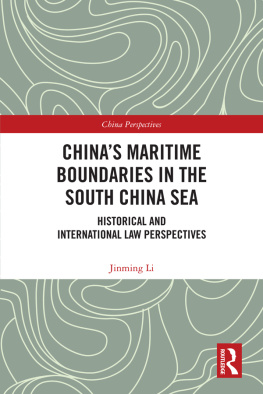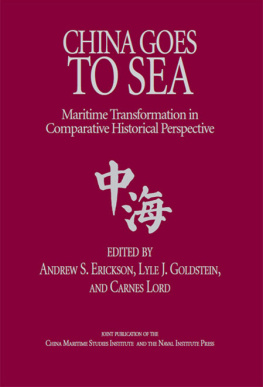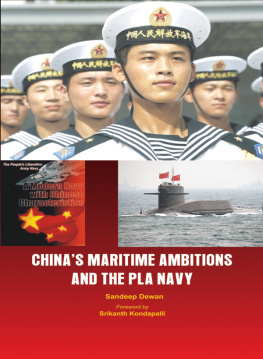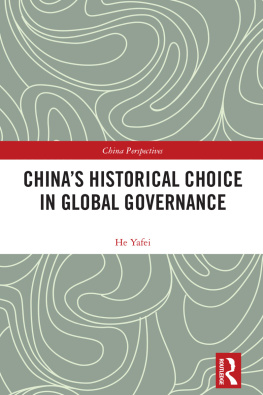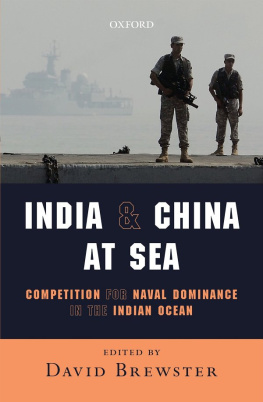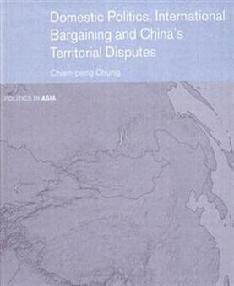Jinming Li - Chinas Maritime Boundaries in the South China Sea: Historical and International Law Perspectives
Here you can read online Jinming Li - Chinas Maritime Boundaries in the South China Sea: Historical and International Law Perspectives full text of the book (entire story) in english for free. Download pdf and epub, get meaning, cover and reviews about this ebook. year: 2020, publisher: Routledge, genre: Romance novel. Description of the work, (preface) as well as reviews are available. Best literature library LitArk.com created for fans of good reading and offers a wide selection of genres:
Romance novel
Science fiction
Adventure
Detective
Science
History
Home and family
Prose
Art
Politics
Computer
Non-fiction
Religion
Business
Children
Humor
Choose a favorite category and find really read worthwhile books. Enjoy immersion in the world of imagination, feel the emotions of the characters or learn something new for yourself, make an fascinating discovery.
- Book:Chinas Maritime Boundaries in the South China Sea: Historical and International Law Perspectives
- Author:
- Publisher:Routledge
- Genre:
- Year:2020
- Rating:4 / 5
- Favourites:Add to favourites
- Your mark:
- 80
- 1
- 2
- 3
- 4
- 5
Chinas Maritime Boundaries in the South China Sea: Historical and International Law Perspectives: summary, description and annotation
We offer to read an annotation, description, summary or preface (depends on what the author of the book "Chinas Maritime Boundaries in the South China Sea: Historical and International Law Perspectives" wrote himself). If you haven't found the necessary information about the book — write in the comments, we will try to find it.
Jinming Li: author's other books
Who wrote Chinas Maritime Boundaries in the South China Sea: Historical and International Law Perspectives? Find out the surname, the name of the author of the book and a list of all author's works by series.
Chinas Maritime Boundaries in the South China Sea: Historical and International Law Perspectives — read online for free the complete book (whole text) full work
Below is the text of the book, divided by pages. System saving the place of the last page read, allows you to conveniently read the book "Chinas Maritime Boundaries in the South China Sea: Historical and International Law Perspectives" online for free, without having to search again every time where you left off. Put a bookmark, and you can go to the page where you finished reading at any time.
Font size:
Interval:
Bookmark:
Introduction
Chinese historical records of the South China Sea
Controversy over the dotted line
Mixed reactions to new developments in contested waters
Introduction
Geographical overview of Chinas maritime boundaries in the South China Sea
- the South China Sea, as one of the richest fishing grounds around the globe, has seven of the worlds top 30 fishing nations by annual catch;
- it has the two dominant ports of Asia: Hong Kong and Singapore;
- it has one of the most hotly contested island territories in the worldthe Nansha Islands;
- it has promising offshore oil and gas reserves;
- it has several Pacific/Indian Ocean choke-points, that is, the Strait of Malacca, the Singapore Strait, the Sunda Strait and the Lombok Strait;
- more than 10,000 merchant ships pass through the sea each year. It is one of the major oceanic routes for crude oil tankers from the Persian Gulf to Asia, and one of the major east-west oceanic routes for goods from Asia to rest of the world.
Font size:
Interval:
Bookmark:
Similar books «Chinas Maritime Boundaries in the South China Sea: Historical and International Law Perspectives»
Look at similar books to Chinas Maritime Boundaries in the South China Sea: Historical and International Law Perspectives. We have selected literature similar in name and meaning in the hope of providing readers with more options to find new, interesting, not yet read works.
Discussion, reviews of the book Chinas Maritime Boundaries in the South China Sea: Historical and International Law Perspectives and just readers' own opinions. Leave your comments, write what you think about the work, its meaning or the main characters. Specify what exactly you liked and what you didn't like, and why you think so.

